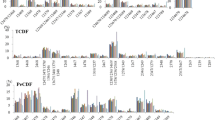Abstract
Polychlorinated biphenyls (PCBs) represent a significant, long-term environmental hazard. Persistent in the environment, accumulative in many species, and toxic, they are a serious pollutant at many industrial sites. The most common methods for environmental remediation – thermal or photochemical treatment – are often an unsatisfactory option if PCBs are present in chemically-contaminated sites, since these methods may convert PCBs into even more toxic chemicals such as dioxins. Microbial degradation offers a safer and more Environmentally-friendly alternative, but susceptibility to microbial degradation varies widely among members of the PCB family, and the relationship of structure to degradation rates is poorly understood. This paper discusses the use of a Self-Organising Map (SOM) to rationalise and predict degradation data for PCBs under the action of Aspergillus Niger. A SOM is shown to be able to predict biodegradability to within 25% of the experimental values for three quarters of a set of 44 PCBs. It appears that prediction of the biodegradability of dichloro-PCBs may be more difficult than prediction for other types of PCB.
Similar content being viewed by others
Explore related subjects
Discover the latest articles, news and stories from top researchers in related subjects.Author information
Authors and Affiliations
Rights and permissions
About this article
Cite this article
Cartwright, H. Investigation of Structure – Biodegradability Relationships in Polychlorinated Biphenyls Using Self-Organising Maps. Neural Comput Applic 11, 30–36 (2002). https://doi.org/10.1007/s005210200013
Published:
Issue Date:
DOI: https://doi.org/10.1007/s005210200013




